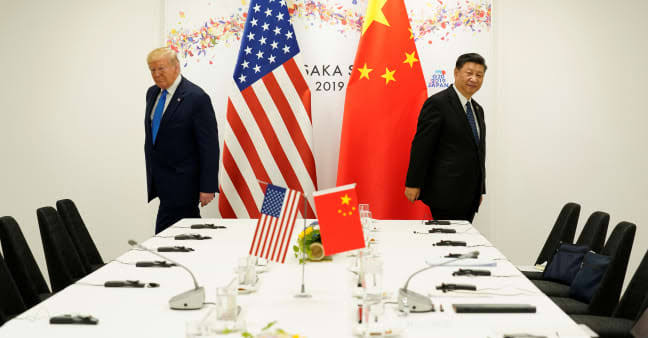China announced fresh tariffs on U.S. imports in response to new American duties. The move signals rising tensions between the two largest economies. Starting February 10, China will impose an extra 15% tariff on U.S. coal and liquefied natural gas. It will also increase duties on American crude oil, farm equipment, and certain vehicles by 10%.
The decision came just hours after the U.S. implemented new tariffs on Chinese goods. Beijing called Washington’s move a violation of World Trade Organization (WTO) rules. It warned that the U.S. tariffs disrupt normal economic relations.
Key Sectors Targeted
China’s new tariffs will affect major American industries. Energy exports like coal, LNG, and crude oil will become more expensive in the Chinese market. This could hurt U.S. producers that rely on Chinese buyers.
Agricultural machinery and vehicles will also face new restrictions. Higher costs may reduce American companies’ competitiveness in China. The tariffs could slow exports and impact revenue for U.S. manufacturers.
Beijing also introduced export controls on critical minerals. These include tungsten, tellurium, ruthenium, and molybdenum. These materials are essential for high-tech industries, including semiconductors and defense equipment. The restrictions could disrupt global supply chains.
Economic Impact and Trade War Concerns
Analysts warn that the trade dispute is entering a dangerous phase. Louise Loo, China lead economist at Oxford Economics, said the new tariffs will raise the overall tax rate on U.S. imports by around 2%.
She believes the trade war is still in its early stages. Both countries are likely to impose more tariffs if tensions continue. A prolonged conflict could harm global economic stability.
Goldman Sachs predicts that China’s real GDP growth will slow by 50 basis points this year due to the new duties. The bank expects overall growth to fall to 4.5% in 2025. Weak demand and a struggling real estate sector could make recovery harder.
Consumer inflation in China is projected to rise by just 0.4%. Low demand is preventing price increases despite rising import costs.
Google Under Investigation in China
In a separate move, China launched an anti-monopoly investigation into Alphabet’s Google. Officials suspect the tech giant of violating Chinese competition laws. The case signals further tensions beyond tariffs.
Google withdrew its search engine from China in 2010 due to censorship issues. However, the company still offers advertising services for Chinese businesses targeting global markets. The probe could put pressure on Google’s remaining operations in China.
Julian Evans-Pritchard, head of China economics at Capital Economics, said China’s actions are a warning. He believes Beijing wants to show strength but is leaving room to de-escalate. If conditions change, China could cancel the tariffs before they take effect. The Google investigation may also end without penalties.
U.S. Tariffs and Trump’s Trade Policy
President Donald Trump’s administration reintroduced tariffs on China shortly after he began his second term. The U.S. now imposes a 10% tariff on many Chinese imports, adding to existing duties of up to 25% from his first presidency.
Trump also ordered a review of China’s compliance with the 2020 trade deal. The results will be presented by April 1. Experts believe the findings could lead to additional tariffs.
The White House press secretary, Karoline Leavitt, said Trump and Chinese President Xi Jinping may speak soon. Any talks between the two leaders could influence future trade decisions.
Trump recently paused new tariffs on Canada and Mexico for 30 days. He reached an agreement with both countries to curb fentanyl trafficking. However, China received no such exemption.
Vishnu Varathan, head of macro research at Mizuho Bank, said U.S.-China trade disputes are harder to resolve than those with Mexico and Canada. He believes geopolitical factors will complicate any potential deal.
Global Markets React
Following the tariff announcements, China’s offshore yuan remained stable against the U.S. dollar. However, mainland stock markets have yet to react. They have been closed due to the Lunar New Year holiday and will reopen on Wednesday.
Investors will be closely watching how the markets respond. Many fear a second round of the U.S.-China trade war could hurt global financial stability.
What Comes Next?
China’s swift retaliation shows it is prepared to counter U.S. trade actions. The tariffs and export controls add pressure on American industries. Meanwhile, Trump’s administration remains firm on its tough stance against Beijing.
The next few weeks will be critical. If neither side backs down, the trade war could intensify. Businesses and consumers in both countries may face higher costs as tariffs take effect. The global economy could feel the impact if tensions continue to escalate.
Related Stories:
Trump Announces 25% Tariffs on Canada and Mexico Imports
Trump threatens 100% tariff on BRICS countries if they pursue creating new currency
















